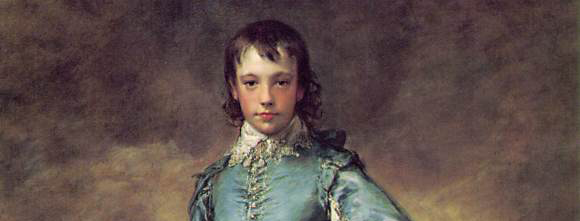The Blue Boy Painting
The Blue Boy was painted by famous portraiture artist Thomas Gainsborough (14 May 1727 – 2 August 1788 – born in Sudbury, Suffolk, England) who was an famous English portrait and landscape painter.
Recognized as talented at ten years old, Gainsborough studied with French artists during his adolescence. Leaving work that would influence future generations, Gainsborough took to creating beautiful, distinctive portraiture to earn income and is best known for his prolific output of fancy portraits, though he himself said that landscapes were his true pleasure.
The Blue Boy (c. 1770) is perhaps Gainsborough’s most famous work, it is thought to be a portrait of Jonathan Buttall (1752–1805), the son of a wealthy hardware merchant, although this has never been proven. It is a historical costume study as well as a portrait: the youth in his 17th-century apparel is regarded as Gainsborough’s homage to Anthony Van Dyck.
He dressed him in a costume dating from about 140 years before the portrait was painted. This type of costume was familiar through the portraits of the great Flemish painter, Anthony van Dyck (1559-1641), who was resident in England during the early 17th century. Gainsborough greatly admired the work of Van Dyck and seems to have conceived The Blue Boy as an act of homage to that master.
The Journey to California and Outcry

In a move that caused a public outcry in Britain, it was then sold to the American railway pioneer Henry Edwards Huntington for $728,800, according to dealer Duveen’s bill, a then-record price for any painting. Today the painting resides at the Huntington Library in California.
Before its departure to California in 1922, The Blue Boy was briefly put on display at the National Gallery where it was seen by 90,000 people; the Gallery’s director Charles Holmes was moved to scrawl farewell words on the back of the painting: “Au Revoir, C.H.”







